Solving the Pollution Problem to Protect Biodiversity
In today's world, the **interconnectedness** of all living things is more apparent than ever. As we navigate the complexities of modern life, one pressing issue looms large: pollution. It’s not just an environmental concern; it’s a **threat** to our very existence and the diverse forms of life that share this planet with us. Pollution is like a creeping shadow, slowly but surely encroaching on the vibrant tapestry of biodiversity that has taken eons to weave. This article delves into the intricate relationship between pollution and biodiversity loss, illuminating effective strategies to mitigate pollution’s impact on ecosystems. By understanding this relationship, we can take meaningful steps towards preserving our planet's diverse species and ensuring a healthier future for all.
Pollution is a **silent killer** of biodiversity, significantly threatening the delicate balance of ecosystems. It alters habitats, disrupts food chains, and ultimately harms the myriad species that depend on these ecosystems for survival. Imagine a symphony where each instrument represents a different species; pollution is the dissonance that throws the entire performance off-key. Understanding the effects of pollution is crucial for developing strategies to protect these ecosystems and the diverse forms of life they support. The loss of biodiversity not only affects the environment but also impacts human health, economies, and the overall quality of life. Therefore, recognizing the **urgent need** to address pollution is paramount.
Pollution comes in various forms, each posing unique challenges to biodiversity. The major types include:
- Air Pollution
- Water Pollution
- Soil Contamination
Each type has distinct effects on habitats and species, necessitating targeted approaches for mitigation. For instance, air pollution can lead to respiratory issues in wildlife, while water pollution can devastate aquatic ecosystems. Recognizing these differences is essential for crafting effective solutions that can help restore balance to our natural world.
Air pollution, primarily stemming from industrial emissions and vehicle exhaust, poses significant threats to biodiversity. It’s akin to a thick fog that obscures the sun, hindering the growth of plants and disrupting entire ecosystems. The consequences extend beyond just the immediate effects; they ripple through food chains and impact various species. For example, plants are particularly sensitive to air pollutants, which can hinder photosynthesis and growth. This disruption can lead to decreased plant diversity, affecting the animals that rely on them for food. Furthermore, animals exposed to air pollution may experience health problems, reduced reproductive success, and habitat displacement, leading to population declines and potential extinction of vulnerable species.
Water pollution is another critical issue that severely impacts aquatic ecosystems. Contaminants from agricultural runoff, industrial waste, and plastic debris threaten the survival of fish, amphibians, and other water-dependent species. Imagine a once-thriving river now choked with plastic waste—this is the reality many aquatic habitats face today. The health of these ecosystems is paramount, not just for the species that inhabit them but also for human communities that rely on clean water for drinking, recreation, and livelihoods. Addressing water pollution is essential for safeguarding biodiversity and ensuring the health of our planet.
Implementing effective pollution reduction strategies is essential for protecting biodiversity. These strategies can include regulatory measures, community initiatives, and technological innovations aimed at reducing emissions and waste. Strong environmental policies and regulations can significantly reduce pollution levels. Governments play a crucial role in enforcing laws that protect ecosystems and promote sustainable practices. However, it’s not just up to policymakers; community engagement and education are vital. Raising awareness and involving communities in pollution reduction efforts fosters a collective responsibility towards environmental stewardship, encouraging sustainable practices that benefit both biodiversity and human health.
Restoring ecosystems damaged by pollution is vital for revitalizing biodiversity. Just as a gardener tends to a wilting plant, restoration efforts can help rehabilitate habitats, allowing native species to thrive once again and promoting ecological balance. Reforestation projects and habitat restoration initiatives can reverse some effects of pollution, providing critical habitats for wildlife and enhancing ecosystem services that support biodiversity. Ongoing monitoring and research are essential for understanding the long-term impacts of pollution on biodiversity. This knowledge informs better conservation strategies and helps track the effectiveness of restoration efforts.
Q: What are the main causes of pollution affecting biodiversity?
A: The main causes include industrial emissions, agricultural runoff, plastic waste, and vehicle exhaust.
Q: How does pollution impact human health?
A: Pollution can lead to respiratory issues, waterborne diseases, and various health problems, affecting overall quality of life.
Q: What can individuals do to reduce pollution?
A: Individuals can reduce pollution by minimizing waste, using public transport, supporting eco-friendly products, and participating in local clean-up efforts.
Q: Why is biodiversity important?
A: Biodiversity is crucial for ecosystem stability, providing essential services like clean air and water, pollination, and disease regulation.
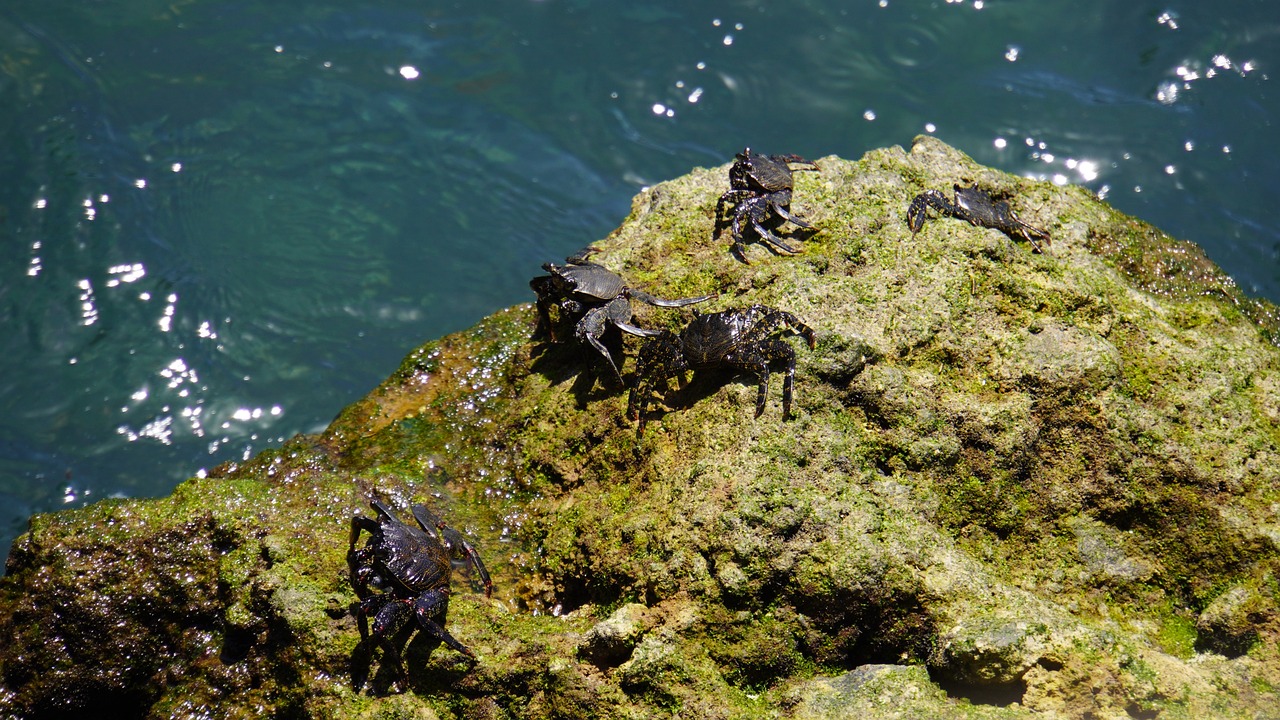
The Impact of Pollution on Biodiversity
Pollution is not just an environmental issue; it is a threat to biodiversity that reverberates through ecosystems, affecting every living organism. When we think of pollution, we often picture smoke billowing from factories or trash floating in our oceans. However, the consequences of these actions extend far beyond our immediate surroundings. Pollution alters habitats, disrupts food chains, and can even lead to the extinction of species that are unable to adapt to their changing environments. The intricate web of life, which relies on a delicate balance, is thrown into disarray when pollution enters the equation.
To understand the profound impact of pollution on biodiversity, we must first recognize the various ways it manifests. For instance, air pollution can lead to acid rain, which alters soil chemistry and affects plant growth. Similarly, water pollution from agricultural runoff introduces harmful chemicals into aquatic ecosystems, jeopardizing the survival of fish and amphibians. The implications are staggering, as the loss of even a single species can trigger a domino effect, leading to the decline of others that depend on it for survival.
In addition to direct harm to species, pollution can also create habitat degradation. For example, coastal areas affected by oil spills or plastic waste see a decline in marine life, as these pollutants can smother coral reefs and disrupt breeding grounds. As habitats become less hospitable, the struggle for survival intensifies, pushing vulnerable species closer to the brink of extinction. The complexity of these interactions means that addressing pollution is not merely about cleaning up waste; it requires a comprehensive understanding of how various pollutants affect the interconnected systems of life.
The effects of pollution on biodiversity can be summarized in the following key points:
- Habitat Alteration: Pollution can change the physical and chemical properties of habitats, making them unsuitable for many species.
- Species Decline: As pollution harms individual species, their populations can dwindle, leading to potential extinction.
- Disruption of Food Chains: The loss of one species can impact others, creating a ripple effect throughout the ecosystem.
- Loss of Ecosystem Services: Healthy ecosystems provide services like clean air and water, which are compromised by pollution.
Ultimately, the relationship between pollution and biodiversity is a complex one, demanding urgent attention and action. By understanding the implications of pollution on our planet's diverse species, we can better advocate for solutions that protect and preserve the natural world. The urgency to act cannot be overstated; the health of our ecosystems directly influences our well-being, and it is in our best interest to ensure that biodiversity flourishes for generations to come.
Q: What is biodiversity?
A: Biodiversity refers to the variety of life on Earth, including the diversity of species, ecosystems, and genetic variations within species.
Q: How does pollution affect wildlife?
A: Pollution can lead to health issues in wildlife, disrupt reproductive success, and cause habitat displacement, ultimately threatening their survival.
Q: What can individuals do to reduce pollution?
A: Individuals can reduce pollution by minimizing waste, using public transportation, supporting clean energy initiatives, and participating in community clean-up events.

Types of Pollution Affecting Biodiversity
Pollution comes in various forms, each with its own set of challenges that threaten the delicate balance of our ecosystems. Understanding these different types of pollution is crucial for developing effective strategies to mitigate their impact on biodiversity. The main types of pollution that significantly affect biodiversity include air pollution, water pollution, and soil contamination. Each of these pollutants interacts with the environment in unique ways, leading to detrimental effects on habitats and the species that inhabit them.
Air pollution, primarily caused by industrial emissions, vehicle exhaust, and agricultural practices, releases harmful substances into the atmosphere. These pollutants can lead to acid rain, which alters soil chemistry and affects plant growth. For instance, when sulfur dioxide and nitrogen oxides combine with moisture in the air, they form acids that fall to the ground, damaging forests and aquatic ecosystems alike. As plants struggle to survive in these altered conditions, the animals that depend on them for food face a similar fate.
Water pollution is another significant concern, arising from agricultural runoff, industrial waste, and plastic debris. Contaminants such as pesticides, heavy metals, and microplastics infiltrate rivers, lakes, and oceans, creating a toxic environment for aquatic life. Fish, amphibians, and other water-dependent species are particularly vulnerable, facing threats such as reduced reproductive success and habitat degradation. The introduction of harmful chemicals into water bodies can lead to algal blooms, which deplete oxygen levels and create dead zones where life cannot thrive.
Soil contamination is often overlooked but is equally damaging to biodiversity. The accumulation of hazardous waste, fertilizers, and pesticides can degrade soil health, impacting plant growth and the organisms that rely on healthy soil ecosystems. Contaminated soils can lead to reduced agricultural productivity and loss of native plant species, which in turn affects the animals that depend on these plants for food and shelter.
In summary, the various types of pollution—air, water, and soil—pose unique challenges to biodiversity. Each type not only threatens individual species but also disrupts the intricate web of life that sustains our planet. Understanding these types of pollution is the first step toward developing targeted strategies for their mitigation, ensuring that we protect the rich tapestry of life that surrounds us.
- What is biodiversity? Biodiversity refers to the variety of life on Earth, including the diversity of species, ecosystems, and genetic variation within species.
- How does pollution affect biodiversity? Pollution alters habitats, harms species, and disrupts ecological balance, leading to declines in biodiversity.
- What are some common pollutants? Common pollutants include carbon dioxide, nitrogen oxides, heavy metals, plastics, and pesticides.
- Can biodiversity recover from pollution? Yes, with effective restoration efforts and pollution reduction strategies, ecosystems can recover and thrive again.
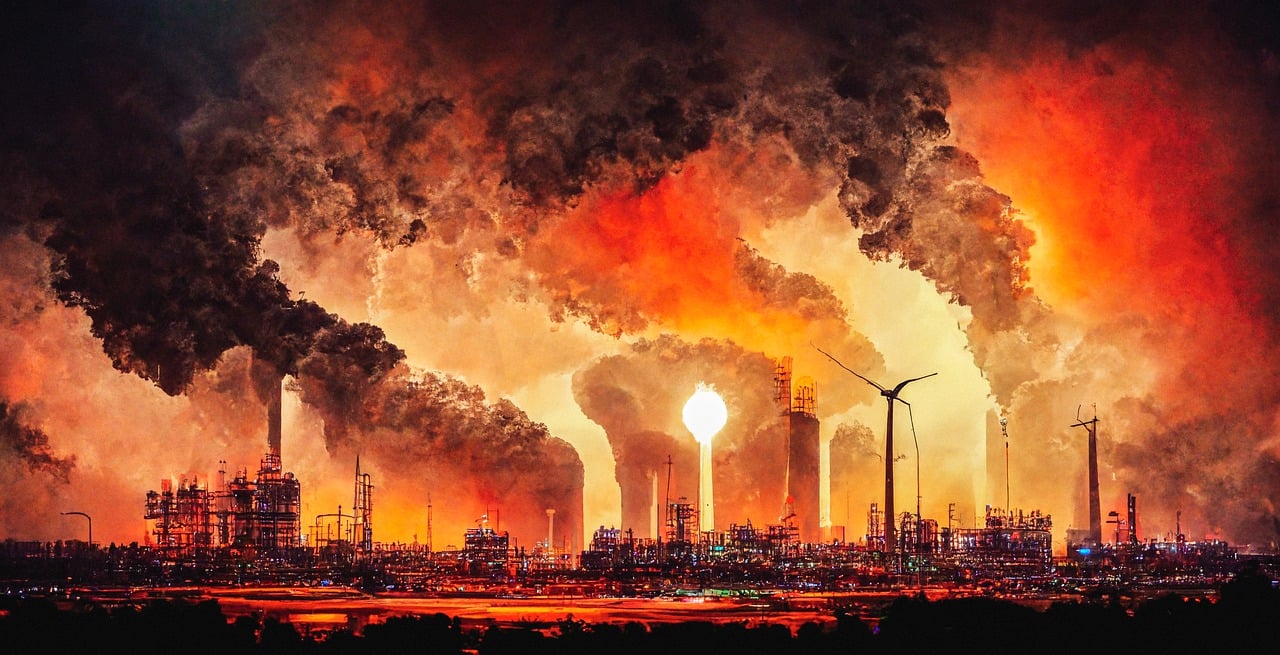
Air Pollution and Its Consequences
Air pollution is not just an urban nuisance; it's a silent killer that reverberates through our ecosystems, affecting every living organism. When we think of air pollution, we often envision thick smog enveloping a city, but the reality is much more insidious. Pollutants like carbon monoxide, nitrogen oxides, and volatile organic compounds can travel long distances, infiltrating even the most remote habitats. This pervasive issue leads to a cascade of negative effects on both flora and fauna, disrupting the delicate balance of our ecosystems.
One of the most alarming consequences of air pollution is its impact on plant life. Plants are the backbone of any ecosystem, providing oxygen, food, and habitat for countless species. However, when they are exposed to high levels of air pollutants, their ability to perform photosynthesis diminishes. This not only stunts their growth but also reduces their reproductive capabilities, leading to a decline in plant diversity. For instance, studies have shown that certain tree species can experience up to a 50% reduction in growth rates when subjected to polluted air conditions.
But the repercussions do not stop at plants. Animals, too, bear the brunt of air pollution. Wildlife exposed to contaminated air can suffer from a range of health issues, including respiratory diseases, reproductive failures, and even behavioral changes. For example, birds that breathe in polluted air may find it difficult to sing, which is crucial for mating rituals. This disruption can lead to decreased populations and, in some cases, local extinctions of vulnerable species. The ripple effect of these changes can be catastrophic, as the decline of one species can impact the entire food chain.
To illustrate the severity of air pollution's impact, consider the following table that outlines the effects on various species:
| Species | Effects of Air Pollution |
|---|---|
| Trees (e.g., Oak, Pine) | Reduced growth, increased susceptibility to disease |
| Birds (e.g., Sparrows, Eagles) | Respiratory issues, altered mating calls |
| Insects (e.g., Bees) | Decreased population, impaired navigation |
As we can see, the consequences of air pollution are far-reaching and multifaceted. It's not merely an issue confined to human health; it extends into the very fabric of our ecosystems. Addressing air pollution is not just about cleaner cities; it's about protecting the intricate web of life that sustains us all. We must take action, whether through policy changes, community initiatives, or personal choices, to mitigate the effects of air pollution and safeguard our planet's biodiversity.
- What are the main sources of air pollution? The primary sources include industrial emissions, vehicle exhaust, and agricultural activities.
- How does air pollution affect human health? Air pollution can lead to respiratory diseases, cardiovascular issues, and other serious health problems.
- What can individuals do to reduce air pollution? Individuals can reduce air pollution by using public transport, conserving energy, and supporting clean air initiatives.
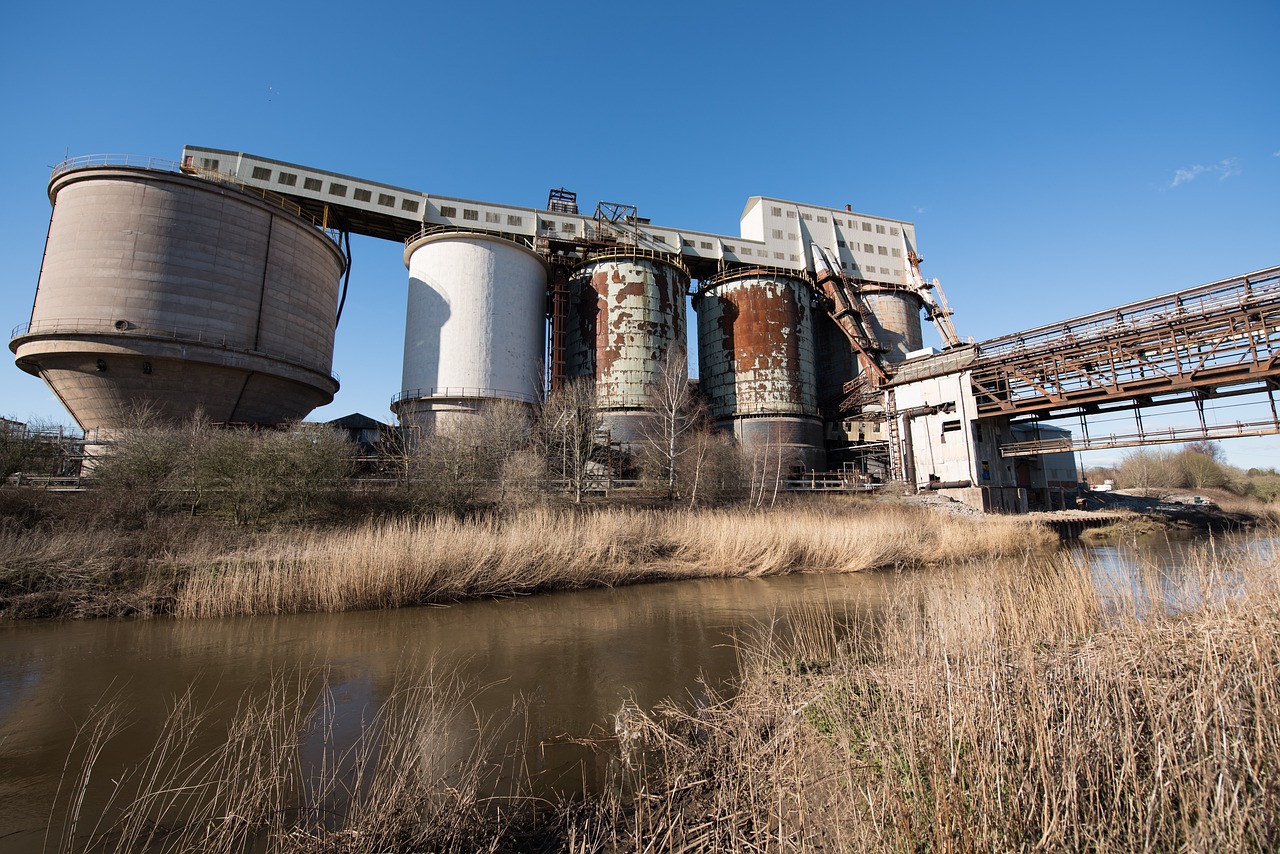
Effects on Flora
The effects of air pollution on flora are profound and often devastating. Plants are the backbone of our ecosystems, providing oxygen, food, and habitat for countless species. However, when air quality declines due to pollutants such as nitrogen oxides, sulfur dioxide, and particulate matter, the very fabric of plant life begins to unravel. These pollutants can inhibit photosynthesis, the process by which plants convert sunlight into energy, leading to stunted growth and reduced vitality. Imagine a world where trees struggle to grow tall and strong, where flowers bloom less vibrantly, and where entire fields of crops yield less produce. This is the grim reality that air pollution can create.
Furthermore, the impacts of air pollution extend beyond individual plants. When dominant species are adversely affected, it can lead to a decrease in plant diversity. A diverse plant community is essential for a healthy ecosystem, as it supports various animal species and contributes to soil health. When certain plants begin to die off or are unable to thrive, the balance of the ecosystem is disrupted. For example, if a particular plant species that provides food for insects is harmed, it could lead to a decline in insect populations, which in turn affects birds and other animals that rely on those insects for sustenance.
Additionally, air pollutants can lead to the formation of acid rain, which can further damage plant life. Acid rain alters the pH levels of soil and water, making it difficult for plants to absorb essential nutrients. This nutrient deficiency can manifest in poor plant health, reduced flowering, and increased susceptibility to disease. The long-term consequences of these changes can be catastrophic, leading to habitat loss and a decline in biodiversity.
To illustrate the severity of air pollution's impact on flora, consider the following table that outlines common pollutants and their effects on plant life:
| Pollutant | Effects on Plants |
|---|---|
| Nitrogen Oxides (NOx) | Inhibited growth, reduced flowering, and increased susceptibility to diseases. |
| Sulfur Dioxide (SO2) | Leaf damage, reduced photosynthesis, and impaired plant metabolism. |
| Particulate Matter | Physical damage to leaves, reduced light penetration, and respiratory issues in plants. |
In conclusion, the effects of air pollution on flora are not just an environmental concern; they are a pressing issue that affects all life on Earth. As plants struggle to survive in polluted environments, the entire ecosystem suffers. It is crucial that we recognize the importance of clean air and take action to reduce pollution for the sake of our planet's biodiversity and our own survival.
- What are the main causes of air pollution? Air pollution is primarily caused by industrial emissions, vehicle exhaust, and agricultural practices.
- How does air pollution affect human health? Air pollution can lead to respiratory diseases, cardiovascular problems, and other serious health issues.
- What can individuals do to reduce air pollution? Individuals can reduce air pollution by using public transportation, conserving energy, and supporting clean energy initiatives.
- Why is biodiversity important? Biodiversity is essential for ecosystem stability, providing resources for food, medicine, and clean air and water.
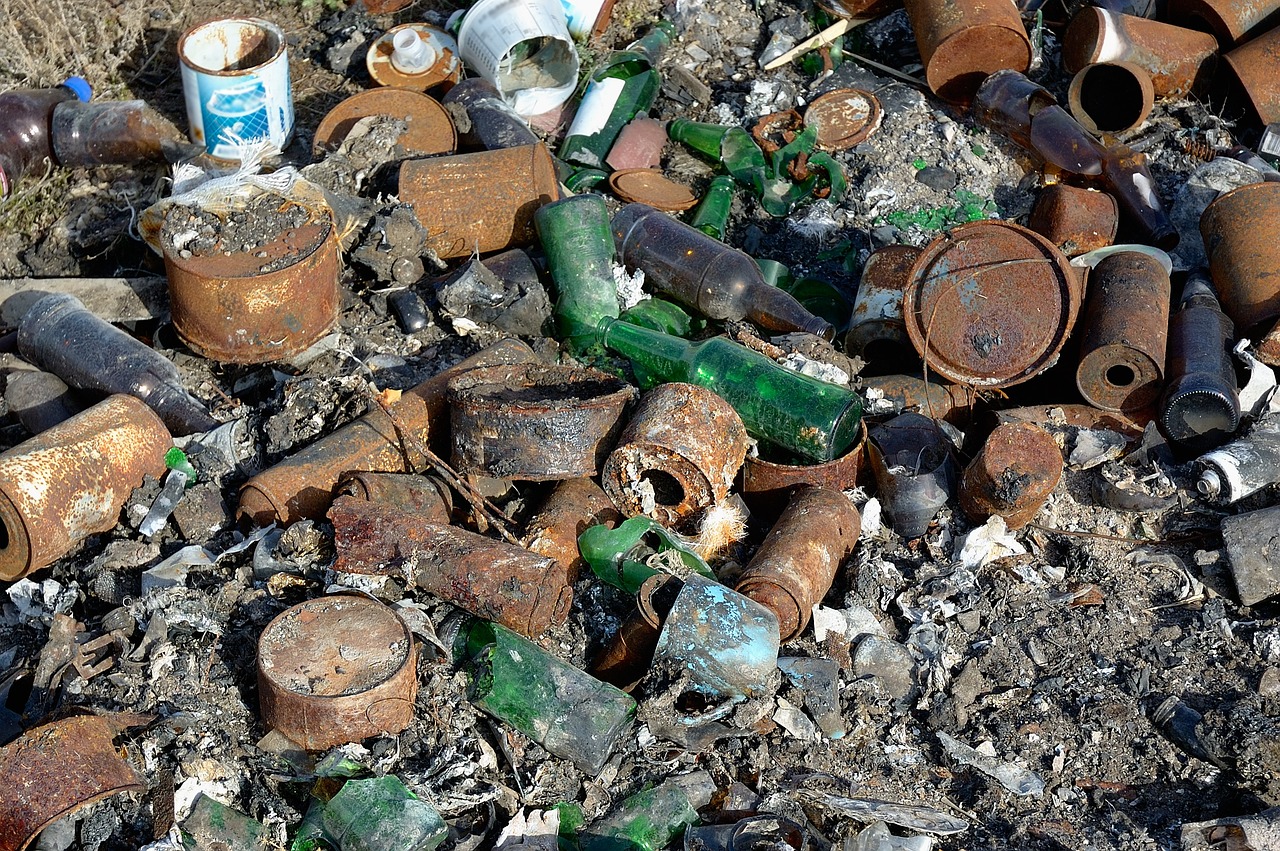
Effects on Fauna
The impact of air pollution on fauna is nothing short of alarming. Animals, much like humans, rely on clean air for their survival and well-being. When air quality deteriorates due to pollutants such as particulate matter, nitrogen oxides, and sulfur dioxide, wildlife suffers immensely. For instance, birds may experience respiratory distress, which can lead to decreased fitness levels and even mortality rates. Imagine a bird struggling to breathe; it can’t sing, it can’t find food, and ultimately, it can’t thrive.
Moreover, the effects of air pollution extend beyond immediate health issues. Reproductive success in many species can be severely compromised. Studies have shown that pollutants can disrupt hormonal systems, leading to lower birth rates or even deformities in offspring. For example, the egg-laying patterns of certain amphibians are altered, drastically reducing their populations. This creates a ripple effect throughout the ecosystem, as these species play crucial roles in their habitats.
Habitat displacement is another grave consequence of air pollution. Animals may be forced to abandon their natural habitats in search of cleaner air, which can lead to increased competition for resources in new areas. This displacement can cause stress and aggression among species, leading to further declines in populations. In some cases, entire populations may become vulnerable to extinction, particularly for species already at risk. The table below illustrates some of the species affected by air pollution:
| Species | Effects of Air Pollution |
|---|---|
| American Robin | Respiratory issues, reduced reproductive success |
| Common Frog | Hormonal disruptions, decreased population |
| Eastern Bluebird | Habitat displacement, increased mortality |
| Red-tailed Hawk | Decreased prey availability, health problems |
In conclusion, the effects of air pollution on fauna are profound and multifaceted. From respiratory issues to reproductive challenges, the consequences are far-reaching and can lead to significant declines in biodiversity. It’s crucial that we recognize these impacts and take action to mitigate air pollution for the sake of our wildlife and the ecosystems they inhabit. After all, a healthy environment is a shared responsibility, and the survival of countless species depends on our commitment to clean air.
- What are the main causes of air pollution affecting fauna?
Air pollution is primarily caused by industrial emissions, vehicle exhaust, and agricultural practices that release harmful substances into the atmosphere. - How can we reduce air pollution to protect wildlife?
Implementing stricter regulations, promoting the use of public transport, and encouraging sustainable agricultural practices are effective ways to reduce air pollution. - What role do individuals play in combating air pollution?
Individuals can contribute by minimizing car use, supporting clean energy initiatives, and raising awareness about the importance of clean air for both humans and wildlife. - Are there any species that are more vulnerable to air pollution?
Yes, species that are already endangered or have specific habitat requirements are often more vulnerable to the effects of air pollution.
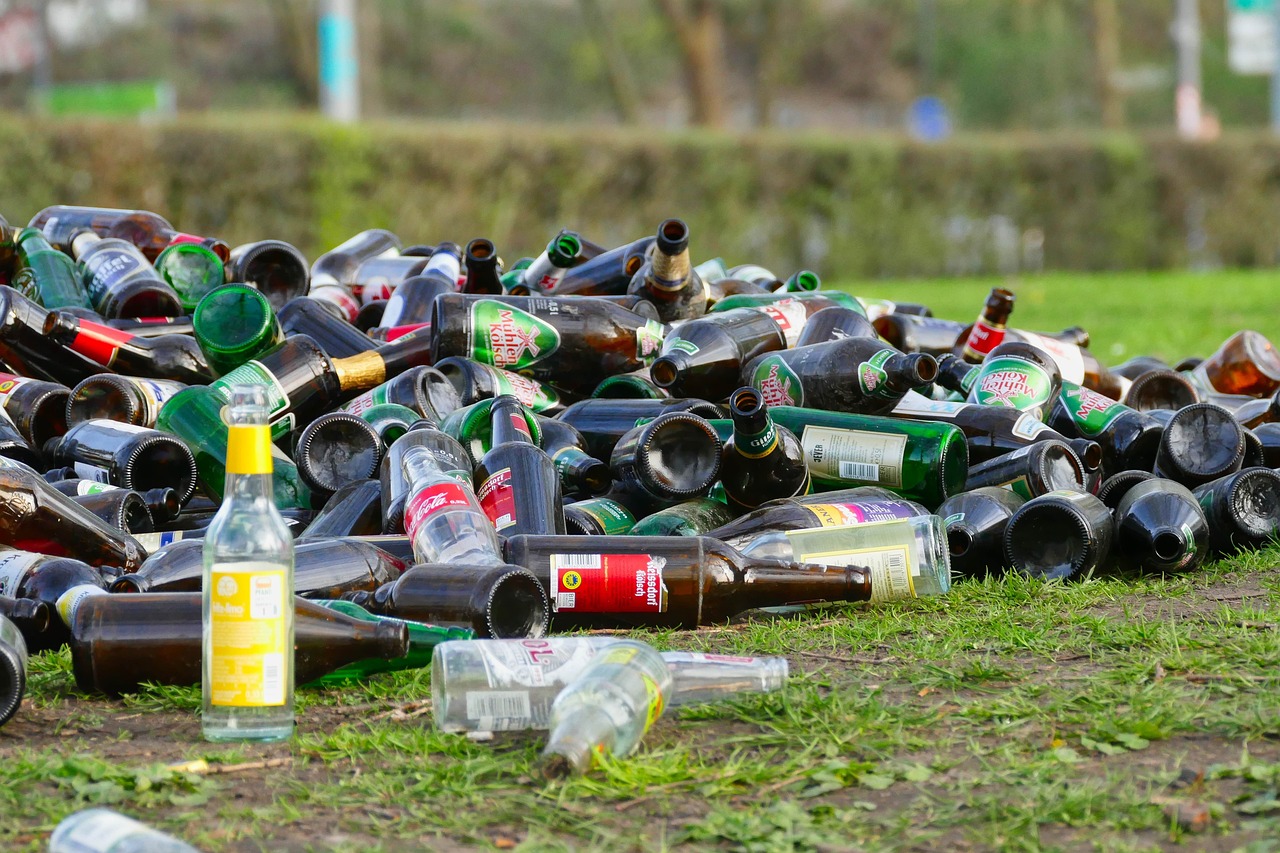
Water Pollution and Ecosystem Health
Water pollution is a pressing issue that poses a **serious threat** to the health of our ecosystems. With sources ranging from agricultural runoff to industrial waste, the contamination of our water bodies has far-reaching effects on aquatic life. Imagine a vibrant river, teeming with fish and plant life, suddenly choked by toxic chemicals and plastic waste. This scenario is not just a hypothetical situation; it's a reality for many ecosystems around the globe.
When pollutants enter waterways, they disrupt the delicate balance of aquatic ecosystems. For instance, **nutrient pollution**, particularly from fertilizers, can lead to **eutrophication**. This process causes excessive growth of algae, which depletes oxygen levels in the water, creating "dead zones" where fish and other aquatic organisms cannot survive. The ripple effects of this phenomenon are profound, as it not only affects fish populations but also the birds and mammals that rely on these fish for food.
Furthermore, the introduction of harmful substances, such as heavy metals and plastics, can have disastrous consequences for biodiversity. Many aquatic species, including amphibians and fish, are particularly vulnerable to these pollutants. For example, **mercury contamination** can accumulate in fish tissues, posing health risks to predators, including humans, who consume them. This bioaccumulation can lead to decreased reproductive success and increased mortality rates among these species.
To illustrate the severity of water pollution and its impact on ecosystem health, consider the following table:
| Type of Pollutant | Source | Impact on Ecosystem |
|---|---|---|
| Nutrient Pollution | Agricultural runoff | Eutrophication, oxygen depletion |
| Heavy Metals | Industrial discharge | Toxicity to aquatic life, bioaccumulation |
| Plastics | Improper waste disposal | Ingestion by wildlife, habitat degradation |
In addition to these pollutants, the presence of **microplastics** has emerged as a critical concern. These tiny plastic particles are often ingested by marine life, leading to physical harm and potential toxicity. The long-term effects of microplastics on food chains and human health are still being studied, but early findings suggest a troubling trend that could threaten not only aquatic ecosystems but also terrestrial ones.
Addressing water pollution requires a multifaceted approach, combining technological innovations, community involvement, and strong regulatory frameworks. By implementing effective waste management practices and promoting sustainable agricultural methods, we can significantly reduce the influx of pollutants into our water systems. **Engaging local communities** in conservation efforts can also foster a sense of responsibility towards protecting our waterways and the diverse species that inhabit them.
- What are the main sources of water pollution? The primary sources include agricultural runoff, industrial discharge, sewage, and plastic waste.
- How does water pollution affect human health? Contaminated water can lead to serious health issues, including gastrointestinal diseases, neurological disorders, and reproductive problems.
- What can individuals do to help reduce water pollution? Individuals can help by reducing plastic use, properly disposing of waste, and supporting local conservation efforts.
- Are there laws to protect water bodies from pollution? Yes, many countries have regulations in place to limit pollution and protect water quality, but enforcement varies widely.
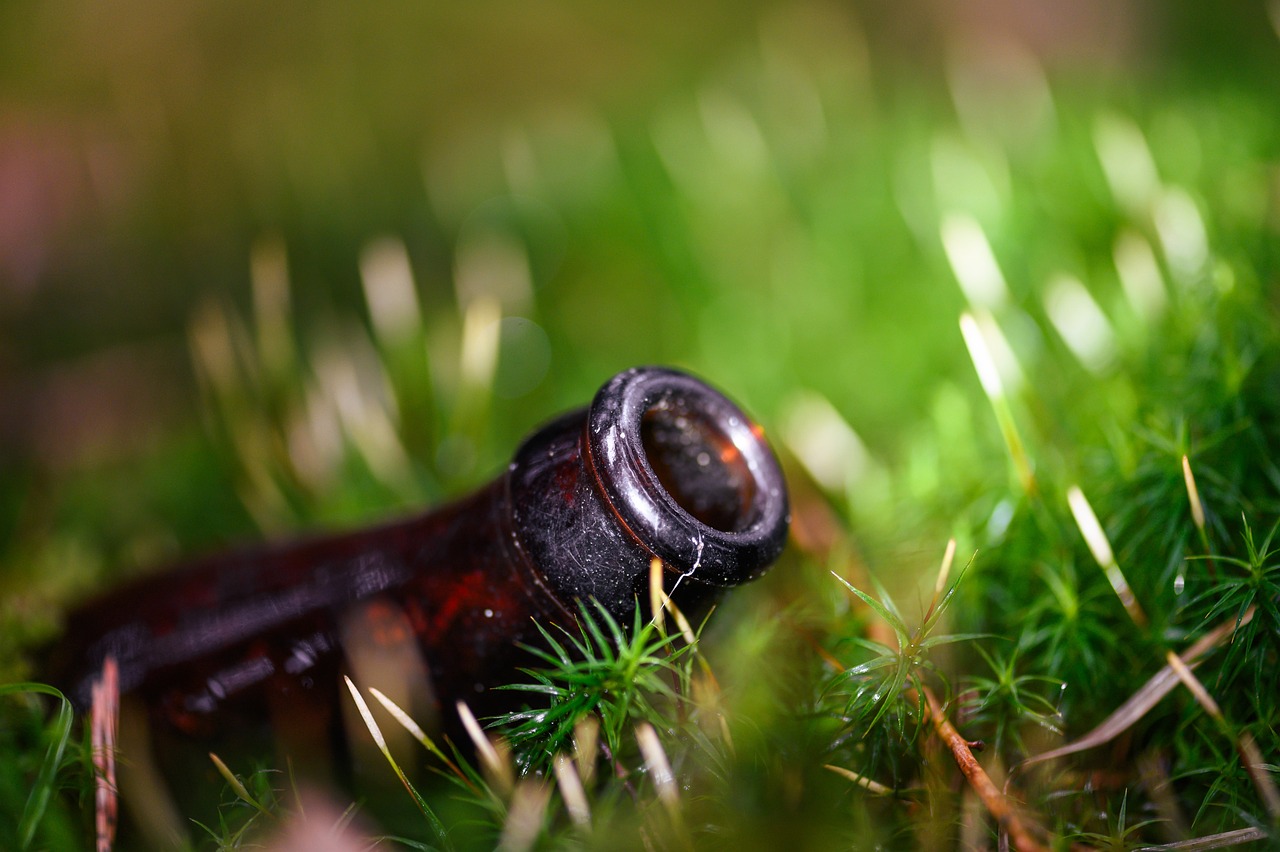
Strategies for Reducing Pollution
Implementing effective pollution reduction strategies is essential for protecting biodiversity. The good news is that there are numerous approaches we can take, and they often require collaboration between governments, communities, and individuals. Think of it as a team effort where everyone plays a part in ensuring our planet remains vibrant and alive with diverse species. It's not just about reducing pollution; it's about creating a sustainable future for generations to come.
One of the most impactful ways to reduce pollution is through policy and regulation. Strong environmental policies can significantly lower pollution levels, acting as a shield to protect our ecosystems. Governments have a crucial role in enforcing laws that not only regulate emissions but also promote sustainable practices. For instance, implementing stricter emissions standards for industries and vehicles can dramatically improve air quality, benefiting both wildlife and human populations. Imagine a world where clean air is the norm rather than the exception—it's not just a dream; it's achievable with the right policies in place.
In addition to government action, community engagement and education play a pivotal role in pollution reduction. When communities come together to raise awareness about pollution and its effects, they foster a sense of collective responsibility towards environmental stewardship. Simple actions, such as organizing local clean-up days or educating neighbors about recycling, can create ripples of change. For instance, a community that actively participates in reducing plastic waste can inspire other areas to follow suit, leading to a larger impact. The more we educate ourselves and others, the more empowered we become to make a difference.
Technological innovations also offer exciting solutions to combat pollution. From renewable energy sources like solar and wind power to advanced waste management systems, technology can help us significantly reduce our ecological footprint. For example, the development of biodegradable materials can help tackle the plastic pollution crisis, while electric vehicles can cut down on harmful emissions. It’s like having a toolbox filled with innovative gadgets that can help us tackle pollution head-on. By investing in these technologies and adopting them widely, we can create cleaner, healthier environments for all living beings.
To illustrate the potential impact of these strategies, consider the following table, which highlights various approaches and their benefits:
| Strategy | Benefits |
|---|---|
| Policy and Regulation | Reduces emissions, protects ecosystems, promotes sustainable practices |
| Community Engagement | Fosters collective responsibility, encourages local initiatives, raises awareness |
| Technological Innovations | Provides sustainable alternatives, reduces waste, improves efficiency |
Ultimately, the fight against pollution is a multifaceted challenge that requires a comprehensive approach. By combining policy changes, community efforts, and technological advancements, we can create a robust framework for reducing pollution. Each step we take, no matter how small, contributes to the larger goal of preserving biodiversity and ensuring the health of our planet.
- What are the main types of pollution affecting biodiversity?
Air, water, and soil pollution are the primary types that significantly threaten various ecosystems. - How can individuals contribute to reducing pollution?
Individuals can reduce pollution by adopting sustainable practices such as recycling, using public transport, and supporting local environmental initiatives. - Why is it important to restore ecosystems damaged by pollution?
Restoration helps revive habitats, supports native species, and promotes ecological balance, which is crucial for biodiversity.
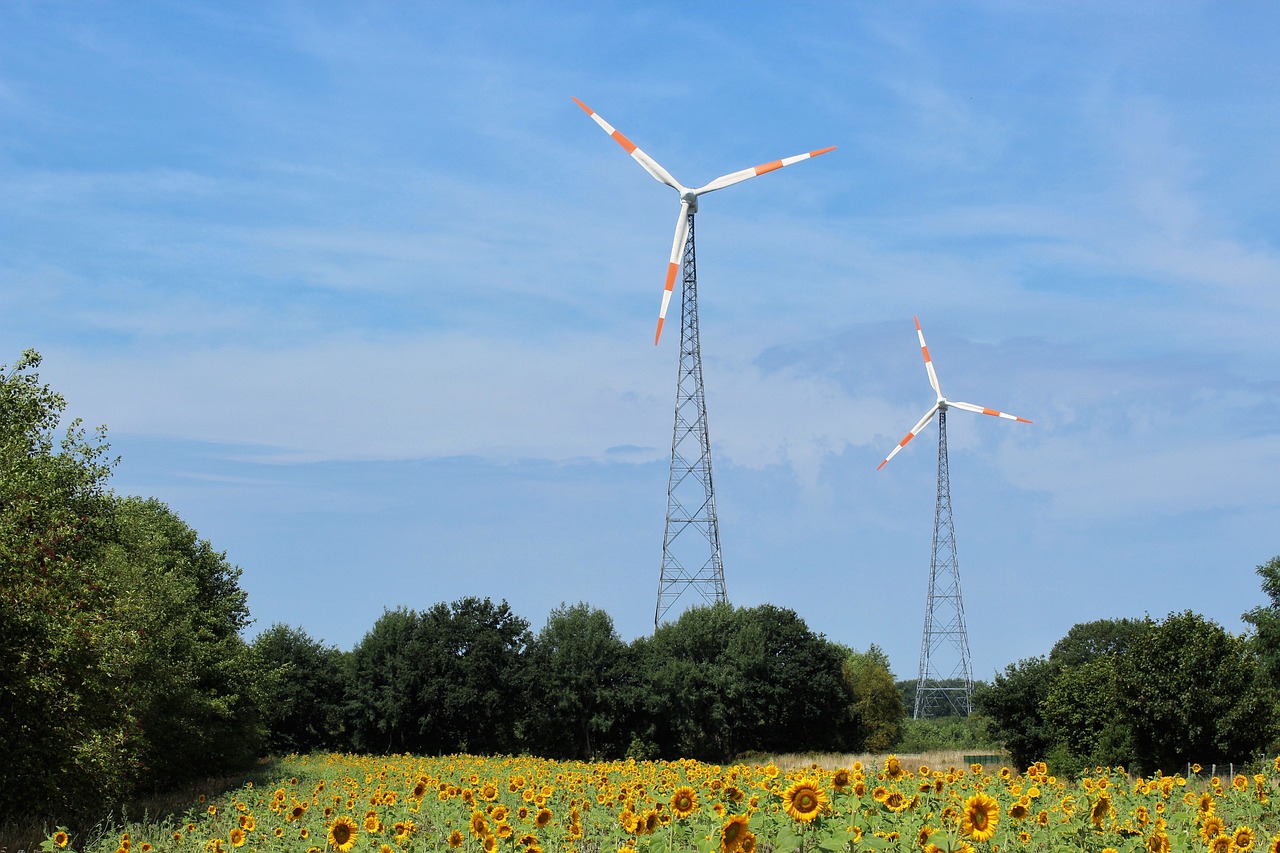
Policy and Regulation
Effective are the backbone of any successful strategy aimed at reducing pollution and protecting biodiversity. Governments around the world have a crucial role to play in crafting laws that not only limit emissions but also promote sustainable practices across various sectors. Think of it as putting a fence around a garden to keep out the pests; regulations serve to protect our natural ecosystems from harmful pollutants that threaten their very existence.
One of the most impactful ways regulations can be implemented is through environmental impact assessments. These assessments require businesses and developers to evaluate the potential effects of their projects on the environment before they proceed. By doing so, we can prevent irreversible damage to habitats that are home to countless species. For example, before a new factory is built, an assessment can reveal whether its emissions would significantly harm local wildlife or air quality.
Moreover, governments can set emission standards for industries. By establishing limits on how much pollution a factory can emit, we can significantly reduce the amount of harmful substances released into the air and water. This is particularly important for industries known for high levels of pollution, such as manufacturing, agriculture, and energy production. For instance, the introduction of stricter regulations on nitrogen and sulfur emissions has shown to improve air quality and, subsequently, biodiversity in affected areas.
To illustrate the importance of effective policy, consider the following table that outlines some key regulations and their impacts on biodiversity:
| Regulation | Type of Pollution Addressed | Impact on Biodiversity |
|---|---|---|
| Clean Air Act | Air Pollution | Reduces respiratory diseases in wildlife and promotes healthier plant growth. |
| Clean Water Act | Water Pollution | Protects aquatic habitats, ensuring survival of fish and amphibians. |
| Endangered Species Act | Habitat Destruction | Provides protections for species at risk, helping to maintain biodiversity. |
In addition to government regulations, community engagement is essential for fostering a culture of environmental stewardship. When local communities are involved in the decision-making process, they are more likely to support and adhere to regulations. This can be achieved through public forums, educational programs, and collaborative projects that empower citizens to take action against pollution. After all, it’s our planet, and we all have a stake in its health!
In conclusion, the synergy between strong policies, community engagement, and ongoing education creates a robust framework for reducing pollution and protecting biodiversity. As we continue to face environmental challenges, it is imperative that we prioritize these strategies to ensure that our ecosystems thrive for generations to come.
- What are the main types of pollution affecting biodiversity?
Air, water, and soil pollution are the primary types that threaten various species and ecosystems. - How can individuals contribute to reducing pollution?
Individuals can reduce pollution by minimizing waste, using public transportation, and supporting eco-friendly products. - Why is policy important for biodiversity?
Policies set regulations that limit harmful emissions and protect natural habitats, which are crucial for the survival of many species.

Community Engagement and Education
This article explores the critical relationship between pollution and biodiversity loss, highlighting effective strategies to mitigate pollution's impact on ecosystems and the importance of preserving our planet's diverse species.
Pollution significantly threatens biodiversity by altering habitats and harming species. Understanding these effects is crucial for developing strategies to protect ecosystems and the myriad forms of life they support.
Various types of pollution, including air, water, and soil contamination, pose unique challenges to biodiversity. Each type has distinct effects on habitats and species, necessitating targeted approaches for mitigation.
Air pollution, primarily from industrial emissions and vehicle exhaust, can lead to respiratory issues in wildlife and disrupt plant growth, ultimately affecting entire ecosystems and food chains.
Plants are particularly sensitive to air pollutants, which can hinder photosynthesis and growth. This disruption can lead to decreased plant diversity and affect the animals that rely on them for food.
Animals exposed to air pollution may experience health problems, reduced reproductive success, and habitat displacement, leading to population declines and potential extinction of vulnerable species.
Water pollution from agricultural runoff, industrial waste, and plastic debris severely impacts aquatic ecosystems, threatening the survival of fish, amphibians, and other water-dependent species.
Implementing effective pollution reduction strategies is essential for protecting biodiversity. These strategies can include regulatory measures, community initiatives, and technological innovations aimed at reducing emissions and waste.
Strong environmental policies and regulations can significantly reduce pollution levels. Governments play a crucial role in enforcing laws that protect ecosystems and promote sustainable practices.
Raising awareness and engaging communities in pollution reduction efforts fosters a collective responsibility towards environmental stewardship, encouraging sustainable practices that benefit both biodiversity and human health. When communities come together, they can create a powerful force for change. Imagine a small town organizing a cleanup day, where residents gather to remove litter from local parks and waterways. This not only beautifies the area but also helps to protect the habitats of local wildlife.
Education plays a pivotal role in this process. Schools and community organizations can implement programs that teach individuals about the impacts of pollution and the importance of biodiversity. Workshops, seminars, and hands-on activities can empower people to take action in their own lives. For instance, teaching children about recycling and composting can instill lifelong habits that reduce waste and promote a healthier environment.
Moreover, creating partnerships between local governments, non-profits, and businesses can amplify these efforts. By working together, these entities can develop initiatives like community gardens, wildlife corridors, and pollution monitoring programs. Such collaborations not only enhance local biodiversity but also foster a sense of community pride and ownership.
To effectively engage the community, it is essential to utilize various platforms for communication. Social media, newsletters, and local events can spread the word about pollution issues and biodiversity conservation. When people feel informed and involved, they are more likely to contribute to solutions.
Restoring ecosystems damaged by pollution is vital for revitalizing biodiversity. Restoration efforts can help rehabilitate habitats, allowing native species to thrive once again and promoting ecological balance.
Reforestation projects and habitat restoration initiatives can reverse some effects of pollution, providing critical habitats for wildlife and enhancing ecosystem services that support biodiversity.
Ongoing monitoring and research are essential for understanding the long-term impacts of pollution on biodiversity. This knowledge informs better conservation strategies and helps track the effectiveness of restoration efforts.
- What is biodiversity? Biodiversity refers to the variety of life on Earth, including the different species of plants, animals, and microorganisms, as well as the ecosystems they form.
- How does pollution affect biodiversity? Pollution can alter habitats, harm individual species, and disrupt food chains, leading to declines in biodiversity.
- What can communities do to help reduce pollution? Communities can organize clean-up events, educate residents about sustainable practices, and advocate for stronger environmental policies.
- Why is community engagement important? Engaging the community fosters a sense of responsibility and encourages collective action towards environmental preservation.

Restoration of Affected Ecosystems
Restoring ecosystems that have been damaged by pollution is not just a noble endeavor; it is a critical necessity for revitalizing biodiversity. When we think about the intricate web of life on our planet, it's easy to see how pollution can unravel that web, affecting everything from the smallest microorganisms to the largest mammals. But fear not! There are effective strategies we can employ to mend these frayed connections and bring life back to our ecosystems.
One of the most impactful methods of restoration is reforestation. This process involves planting trees in areas where forests have been depleted, whether due to industrial activities, agriculture, or urban development. Trees not only provide habitat for countless species but also improve air quality and stabilize soil, preventing erosion. Imagine a barren landscape transformed into a lush forest teeming with life! This is the power of reforestation.
In addition to reforestation, habitat restoration initiatives play a vital role. These projects focus on rehabilitating specific ecosystems, such as wetlands, grasslands, and coral reefs. For instance, restoring wetlands can improve water quality, provide flood protection, and create a sanctuary for wildlife. The benefits are multifaceted, as healthy ecosystems contribute to overall environmental stability and biodiversity.
| Restoration Method | Benefits |
|---|---|
| Reforestation |
|
| Wetland Restoration |
|
| Coral Reef Restoration |
|
Moreover, ongoing monitoring and research are essential components of successful restoration efforts. By studying the long-term impacts of pollution on biodiversity, we can better understand what strategies work and which do not. This knowledge is invaluable, as it informs future conservation strategies and helps us gauge the effectiveness of our restoration projects. Think of it as a scientist's toolkit, filled with the necessary tools to ensure we are making informed decisions.
In conclusion, the restoration of affected ecosystems is a multifaceted approach that requires collaboration, dedication, and a willingness to embrace change. By focusing on methods like reforestation and habitat restoration, while also prioritizing monitoring and research, we can breathe life back into our damaged ecosystems. The journey may be long, but the rewards—vibrant ecosystems rich in biodiversity—are well worth the effort.
Q: Why is ecosystem restoration important?
A: Ecosystem restoration is crucial for reviving biodiversity, improving air and water quality, and providing essential habitats for various species.
Q: What are the main methods of ecosystem restoration?
A: The primary methods include reforestation, wetland restoration, and habitat rehabilitation, each tailored to the specific ecosystem being restored.
Q: How can I get involved in ecosystem restoration efforts?
A: You can participate by volunteering with local environmental organizations, supporting reforestation projects, or simply spreading awareness about the importance of biodiversity.
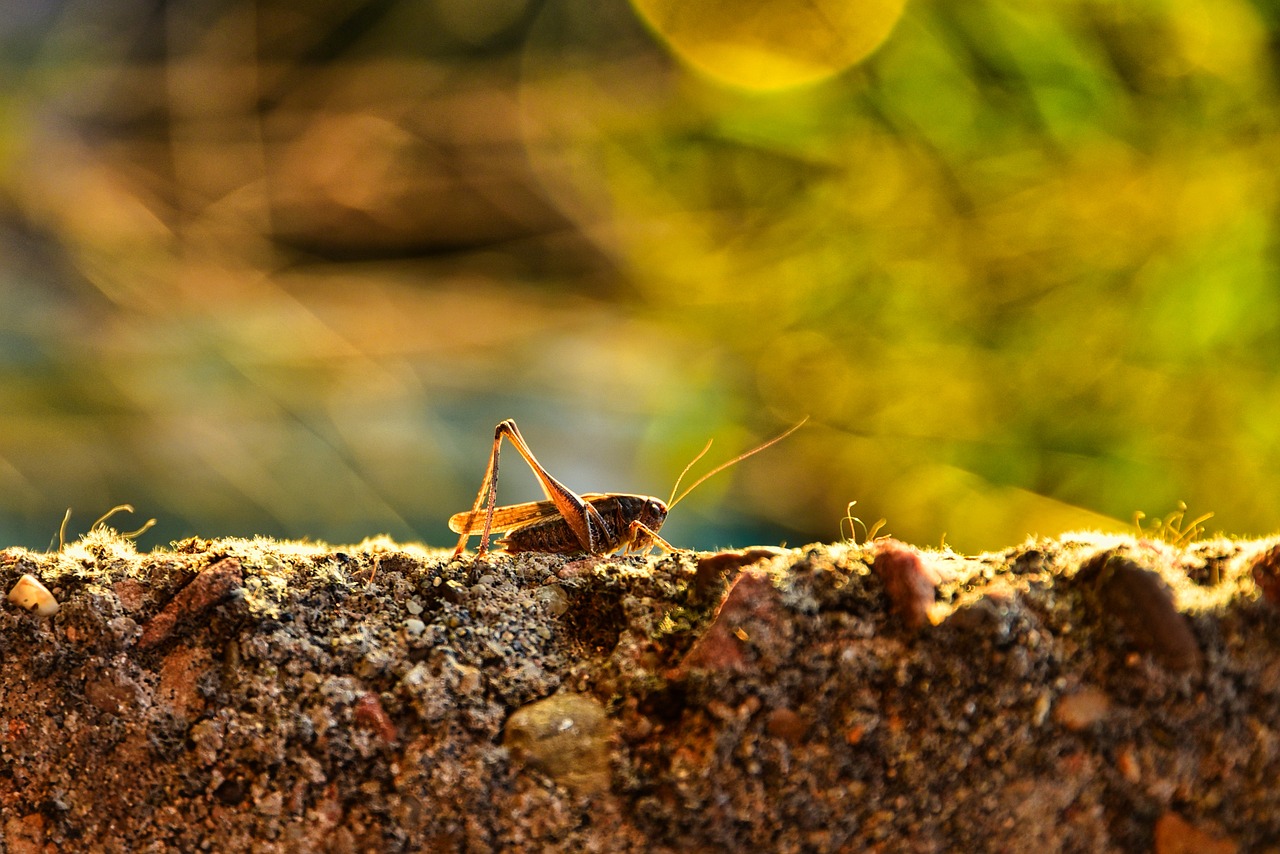
Reforestation and Habitat Restoration
Reforestation and habitat restoration are not just buzzwords; they are vital strategies in the fight against biodiversity loss caused by pollution. Imagine a once-thriving forest, now reduced to barren land due to industrial waste and deforestation. The loss of trees means the loss of homes for countless species, which directly impacts the entire ecosystem. By replanting trees and restoring natural habitats, we can breathe life back into these areas, allowing flora and fauna to flourish once again.
Reforestation involves planting trees in deforested or degraded areas, while habitat restoration encompasses a broader range of activities aimed at returning ecosystems to their original state. This can include removing invasive species, cleaning up polluted sites, and reintroducing native species. The benefits of these efforts are manifold:
- Improved Air Quality: Trees act as natural air filters, absorbing pollutants and releasing oxygen, which is essential for all living beings.
- Enhanced Biodiversity: Restoring habitats allows various species to return, fostering a rich tapestry of life that contributes to ecological stability.
- Carbon Sequestration: Trees capture carbon dioxide, helping to mitigate climate change, which is another significant threat to biodiversity.
Moreover, reforestation projects can be tailored to local conditions and species, ensuring that the right trees are planted in the right places. For instance, planting native species not only supports local wildlife but also enhances the resilience of the ecosystem against diseases and climate fluctuations. In some regions, community involvement in these projects has proven to be incredibly effective. People take pride in their local environment, and when they are given the opportunity to participate in restoration efforts, the results can be transformative.
However, the journey doesn’t end with planting trees. Continuous monitoring and maintenance are crucial to ensure that these young forests grow into mature ecosystems. This includes protecting them from pests, diseases, and human encroachment. By investing in both reforestation and ongoing habitat restoration, we create a sustainable future where biodiversity can thrive, ecosystems can recover, and the impacts of pollution can be mitigated.
Q1: What is the difference between reforestation and afforestation?
A1: Reforestation refers to replanting trees in areas that have been deforested, while afforestation involves planting trees in areas that have not previously been forested.
Q2: How can I get involved in reforestation efforts?
A2: Many organizations offer volunteer opportunities for tree planting and habitat restoration. You can also support local initiatives by donating or spreading awareness.
Q3: What species should be planted in reforestation projects?
A3: Native species are preferred for reforestation as they are adapted to the local environment and support local wildlife.
Q4: How long does it take for a reforested area to mature?
A4: It can take several decades for a reforested area to mature into a fully functioning ecosystem, but benefits can be observed much sooner.
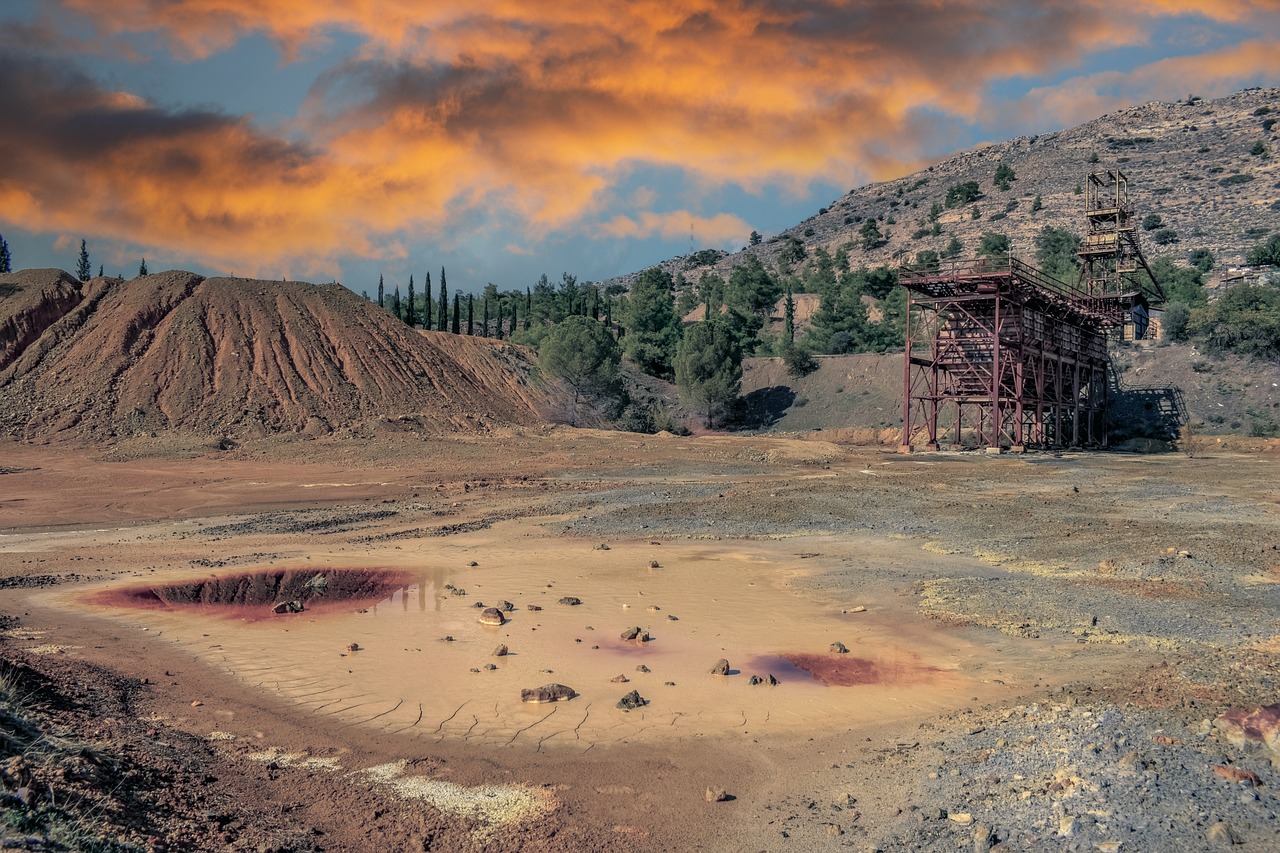
Monitoring and Research
Monitoring and research are the backbone of understanding the intricate relationship between pollution and biodiversity. Without a solid grasp of how pollutants interact with ecosystems, we risk implementing ineffective strategies that might do more harm than good. Imagine trying to fix a car without knowing what’s wrong with it; that’s what tackling pollution without adequate research feels like.
Ongoing monitoring involves systematically observing environmental conditions and species populations over time. This can be conducted through various methods, including field surveys, remote sensing technologies, and water quality assessments. For instance, scientists often use bioindicators, which are species that reflect the health of an environment, to gauge pollution levels. If these species are thriving, it’s a good sign; if they’re declining, it signals a problem that needs to be addressed.
Research plays a crucial role in identifying the long-term impacts of pollution. By studying historical data and current trends, researchers can uncover patterns that inform conservation strategies. For example, studies have shown that certain pollutants can lead to bioaccumulation in aquatic species, which in turn affects the entire food chain, including humans who consume these fish. Understanding these dynamics allows for targeted interventions that can mitigate such risks.
Moreover, collaborative research efforts involving universities, government agencies, and non-profit organizations can amplify the impact of monitoring initiatives. By pooling resources and expertise, these collaborations can lead to more comprehensive studies and effective solutions. For example, a joint project might focus on a specific river system, assessing both water quality and the health of local wildlife. The findings can then inform policy changes that protect these vital ecosystems.
To effectively communicate the findings from monitoring and research, it’s essential to present the data clearly. Below is a simple table showcasing the relationship between pollution levels and biodiversity indicators based on recent studies:
| Pollutant Type | Biodiversity Indicator | Impact Level |
|---|---|---|
| Heavy Metals | Fish Population | High |
| Nitrates | Amphibian Diversity | Moderate |
| Plastics | Bird Species | Low |
In conclusion, monitoring and research are not just academic exercises; they are vital tools in the fight against pollution and the preservation of biodiversity. By investing in these areas, we can develop a clearer understanding of our environmental challenges and create more effective solutions that ensure a healthier planet for future generations.
- What is the importance of monitoring pollution levels? Monitoring pollution levels helps identify the sources and impacts of pollutants, guiding effective conservation strategies.
- How can research inform policy decisions? Research provides the evidence needed for policymakers to create regulations that protect ecosystems and promote sustainable practices.
- What role do communities play in monitoring efforts? Communities can participate in citizen science projects, helping to collect data and raise awareness about local environmental issues.
Frequently Asked Questions
- What is the relationship between pollution and biodiversity?
Pollution significantly threatens biodiversity by altering habitats and harming various species. The impact of pollutants can disrupt ecosystems, leading to a decline in species diversity and ecological balance.
- What types of pollution are most harmful to biodiversity?
There are several types of pollution that adversely affect biodiversity, including air pollution, water pollution, and soil contamination. Each type poses unique challenges and requires targeted strategies for mitigation.
- How does air pollution affect plants and animals?
Air pollution can hinder photosynthesis in plants, leading to reduced growth and diversity. For animals, exposure to pollutants can result in health issues, decreased reproductive success, and even habitat displacement, which threatens their survival.
- What are the effects of water pollution on aquatic life?
Water pollution from sources like agricultural runoff and plastic waste severely impacts aquatic ecosystems. It threatens the survival of fish, amphibians, and other species that depend on clean water for their existence.
- What strategies can be implemented to reduce pollution?
Effective strategies for reducing pollution include strong environmental policies, community engagement, and technological innovations. These approaches can help decrease emissions and waste, ultimately benefiting biodiversity.
- How can communities contribute to pollution reduction?
Communities can play a vital role in pollution reduction by raising awareness, participating in clean-up initiatives, and adopting sustainable practices. Collective efforts foster a sense of responsibility towards the environment.
- Why is ecosystem restoration important?
Restoring ecosystems damaged by pollution is crucial for revitalizing biodiversity. It helps rehabilitate habitats, allowing native species to thrive and promoting ecological balance, which is essential for a healthy environment.
- What role does monitoring and research play in conservation?
Ongoing monitoring and research are essential for understanding pollution's long-term impacts on biodiversity. This knowledge informs better conservation strategies and helps track the effectiveness of restoration efforts, ensuring that ecosystems are protected.



















